When's the best time to visit Tahiti?
The best time to visit Tahiti is between June and September, the cooler dry season with low humidity and perfect weather for beaches, rainforest excursions, and exploring the capital, Papeete. This period sees plenty of cultural events, like the Heiva I Tahiti Festival at the ancient Arahurahu Marae temple, and moderate pricing on hotels and flights.
If you’ve been looking for a less-crowded tropical paradise for your next trip, Tahiti fits the bill. From bustling markets and sightseeing in the capital, Papeete, to lounging, snorkeling, and swimming at the unspoiled beaches, this is the place to unwind.
With white- and black sand beaches, dense, mountainous rainforests that hide waterfalls and wildlife, and luxe resorts with overwater bungalows, this French Polynesian island is incredible. But what’s the best time to visit Tahiti?
This remote island in the central Pacific Ocean experiences only 2 seasons: A cool dry season and a hot, humid rainy season.
Temperatures hover between the mid-70s and upper 80s year-round, but rainfall and humidity levels fluctuate reliably and make some months better for a visit than others.
The month you visit will affect pricing and crowds. If you’re the type of traveler that loves attending local events to immerse yourself in the culture, certain months offer more festivals and activities than others.
Let’s take a look at the overall best time to visit Tahiti, along with the cheapest, least busy, and worst months to go. We’ll show you what you can expect in terms of weather, cost, crowds, and events month-to-month.
Overall Best Time to Visit Tahiti
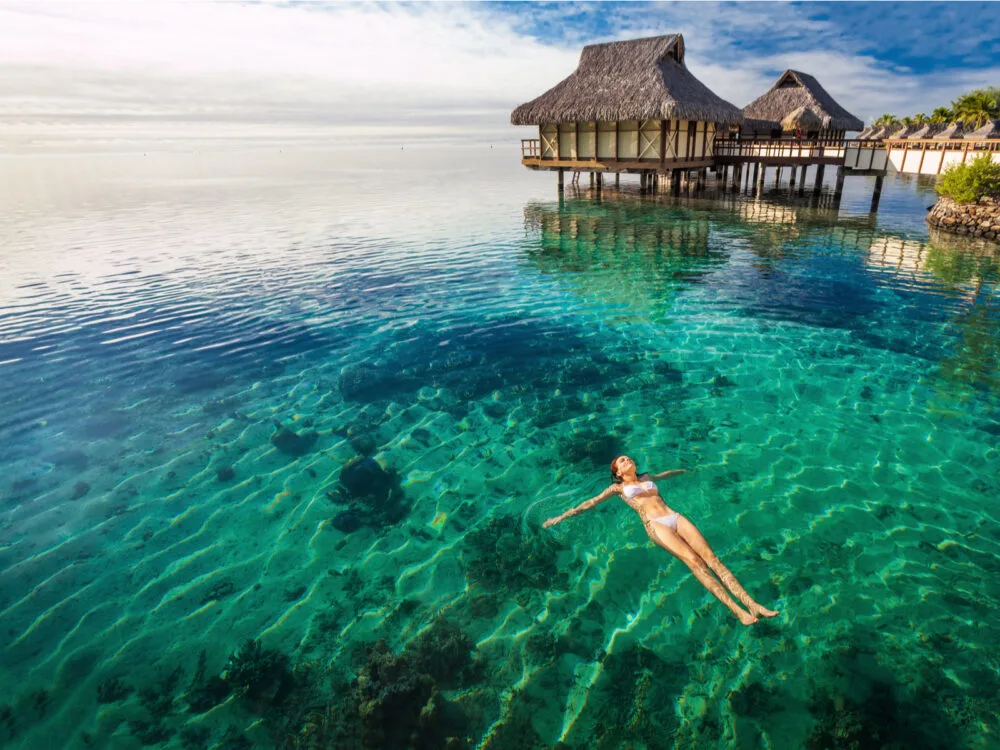
Martin Valigursky/Shutterstock
June to September is the best time to visit Tahiti. You’ll enjoy milder temperatures with sunny skies in the 80s, lower humidity, and an array of cultural events and festivals in between beach days, hiking, and adventure excursions.
You couldn’t ask for better conditions than you’ll find between June and September. Part of the broader dry season (May to October), these months offer a nice little break from sweltering heat and humidity that arrives during the rainy season.
The weather in Tahiti is at its best during these months with highs in the mid-80s, very little rainfall to stand in the way of outdoor activities and sunbathing at the beach, and plenty of opportunities to enjoy water sports and outdoor adventures.
- June: 73-85°F; 5 rainy days
- July: 72-84°F; 4 rainy days
- August: 72-83°F; 3-4 rainy days
- September: 73-84°F; 3-4 rainy days
Head to Pointe Venus, a black sand peninsula beach on the northern side of the island, for an otherworldly beach day. There’s a lighthouse on the point with amazing views of the mountains. This is a favorite spot to watch sunsets!
Explore beaches beyond your resort to experience more of the island. Surfers will appreciate the breaks at the black sand Taharuu Beach on the western coast, where there’s also a small freshwater “lake” at the mouth of the river.
June to September is the best time to surf in Tahiti. The dry season means bigger breaks, so even if you’re not a surfer, you’ll be able to watch skilled individuals braving big waves and showcasing their talent from popular surfing beaches like Papenoo, Papara, and Teahupo.
In the capital, Papeete, sightseeing is great this time of year with cool places to visit like the Presidential Palace, the 19th-century Notre Dame Cathedral, Papeete Tahiti Temple and Kanti Chinese Temple, and the Robert WAN Pearl Museum.
Do some shopping at the bustling, colorful Papeete Market downtown while it’s cooler. This is the local hotspot for fresh produce, flower garlands, authentic food, and locally-crafted goods and gifts. The market smells amazing — Tahitian gardenia, vanilla, and spices fill the air.
Head to the market early since it usually closes down by the afternoon. The Vamai Shopping Mall nearby (close to the cruise ship port) has 60+ shops with everything from perfumes to food if you want to keep shopping!
The only real downside to planning your trip between June and September is that you’ll pay more for your hotel. We analyzed pricing data from Google Hotels and Skyscanner to show you how much you can expect to pay:
- June: $328/night; flights from $629 957
- July: $335/night; flights from $625 960
- August: $311/night; flights from $697 1008
- September: $519/night; flights from $626 (HIGH HOTELS) 1145
The good news? The best months are not the most expensive months of the year to visit Tahiti — they’re just not the cheapest. June is also one of the least busy months to visit Tahiti if you want to avoid crowds.
August and June offer the best deals on hotels, while June, July, and August offer better deals on flights. The cheapest month to visit during this prime period is June.
Another great thing about coming to Tahiti during the best part of the dry season are the cool local festivals and events are going on. Check out these events while you’re on the island:
- Tahiti Fashion Week (Jun) in Faa’a features fashion parades with local and traditional designs, cultural dance performances, and participants competing for modeling contracts
- Miss Tahiti Competition (late Jun) features a parade in Papeete as young women don plant-based fashion sourced from the island in a competition to bear the crown of Miss Tahiti
- Heiva I Tahiti (Jul) is the biggest cultural event in Tahiti at Arahurahu Marae (an ancient Polynesian temple) in Paea; this is where reenactments of ancient cultural ceremonies, like fire walking and canoe races, take place
June-September includes the least humid, coolest, and driest months of the year — just right for a fun-filled vacation that doesn’t hinge on checking the daily forecast to avoid downpours. While there’s still a little rain each month, it’s pure bliss compared to the rainy season.
Ready to Book?
Unlock Exclusive Discounts on Expedia.com!
Got Travel Insurance?
Protect yourself for unexpected interruptions.
Compare Plans We may be compensated when you book after clicking on one of our links.Cheapest Time to Visit Tahiti
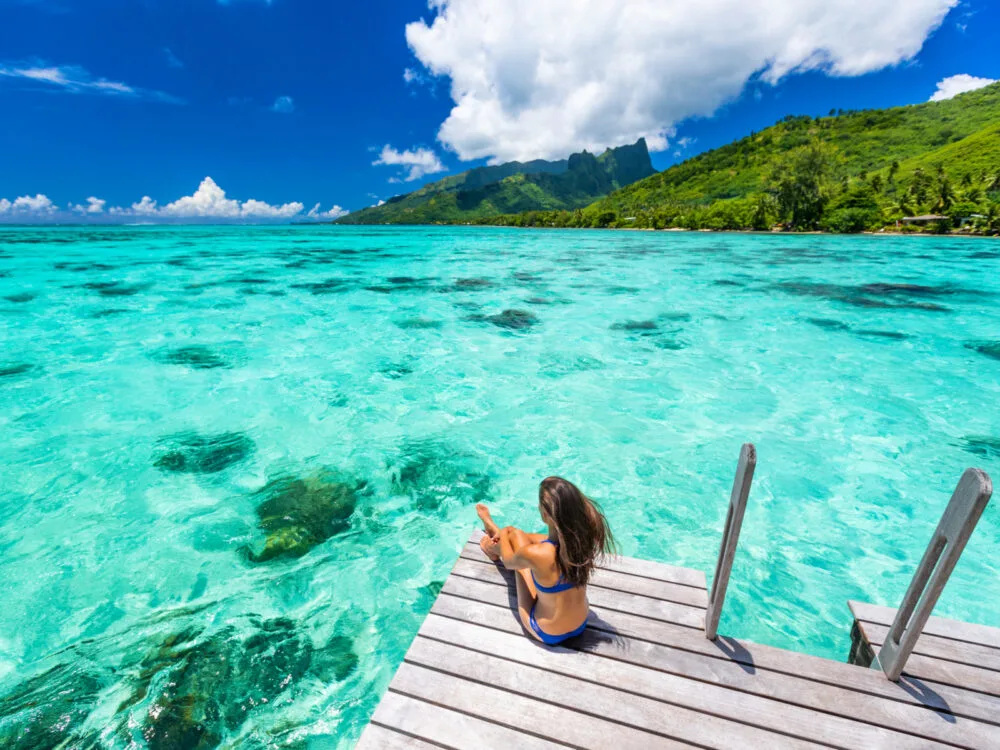
Maridav/Shutterstock
The cheapest time to visit Tahiti is November to February. This period is part of the rainy season, when the island is hot, humid, and wet for several days of each month. That makes it riskier for planning a trip, but you’ll save big if you decide to gamble!
The broader rainy season runs from December to May, but November through February sees the brunt of the rainfall with the most humid conditions. It’s not as appealing for travelers seeking the best weather, but that’s exactly why you’ll save money this time of year.
- November: 75-86°F; 10 rainy days
- December: 76-86°F; 14-15 rainy days
- January: 76-87°F; 13-14 rainy days
- February: 77-87°F; 11 rainy days
December is the wettest month of the year in Tahiti, while December and January tie as the most humid months of the year on the island. The only way to make it bearable? Spend as much time as possible near or in the water.
This isn’t the time of year to go on rainforest hikes. But you might be willing to put up with the hot, sticky air with plans to jump into a natural pool at the base of a cooling waterfall along the way!
Check out the Water Gardens of Vaipahi (located in Mataiea) to see small waterfalls and streams, a lily pond, and tropical flowers blooming in a well-maintained-yet-natural paradise with signs to mark different flora species.
Get a relaxing taurumi Polynesian massage with aromatic oils to release tension and prep yourself to unwind at the beach. There are saunas, cold baths, jacuzzis, and traditional hammam (baths). You’ll find spas like these all over resort areas in Tahiti.
Punaauia Beach is a popular spot on the west coast. While the water can be rough during the dry season, the rainy season sees calmer waves that are just right for swimming, snorkeling, and paddleboarding. Bring a picnic or eat at the Sunset Grill on the beach!
But the real star of the show between November and February is how much you can save on a trip to Tahiti. Google Hotels and Skyscanner data shows how much cheaper it is to visit during these months:
- November: $257/night; flights from $625
- December: $260/night; flights from $697
- January: $174/night; flights from $743
- February: $189/night; flights from $629
While January and February see lower prices on hotels, the overall cheapest months to visit Tahiti are (in order) February, November, January, and December when you factor in both hotel prices and airfare.
You could pay as little as $1,952 for a 7-night trip to Tahiti in February. November, December, and January are similarly cheap and also tend to be less crowded as tourists avoid the rainiest, most humid weather on the island.
This period also hosts many of Tahiti’s festivals and events, from dance competitions and art showcases to a film festival and Chinese New Year celebrations:
- Hura Tapairu Dance Competition (Nov) brings modern and contemporary dance to the island with troupes from Tahiti and nearby islands competing in small groups with non-traditional performances over a week
- Christmas Downtown (mid-Dec) in Papeete brings holiday lights, decorations, and themed shop windows to the island in celebration of the Christmas season along with the Great Christmas Market with entertainment and refreshments
- Salon de Noël (late Dec) in Papeete brings artisans from the island to the capital to showcase handcrafted goods and gifts at the Hall of the Assembly of French Polynesia
- Tahiti Tiare Day (Dec) is an aromatic celebration of Tahiti’s national flower, the fragrant Tahitian gardenia, with the capital (Papeete) engaging in the distribution of fresh flower garlands, bouquets, and flower decorations at local shops
- International Oceanian Documentary Film Festival (Feb) at the Maison de la Culture celebrates documentary films centering on the traditions, plights, and changes facing the Oceania region with screenings, conferences, workshops, and more
- Chinese New Year (Feb/Mar) is celebrated during the lunar new year in Tahiti due to its large Chinese population and proximity to Asia with lanterns, parades, fireworks, and Chinese-Polynesian cuisine
While you won’t find the best weather in Tahiti between November and February, it doesn’t rain constantly. The savings, fun events, and calmer waters during the rainy season can make it a good time to visit if you know what to expect.
Read Next: How Long Is a Flight from the US to Bora Bora?
Least Busy Time to Visit Tahiti
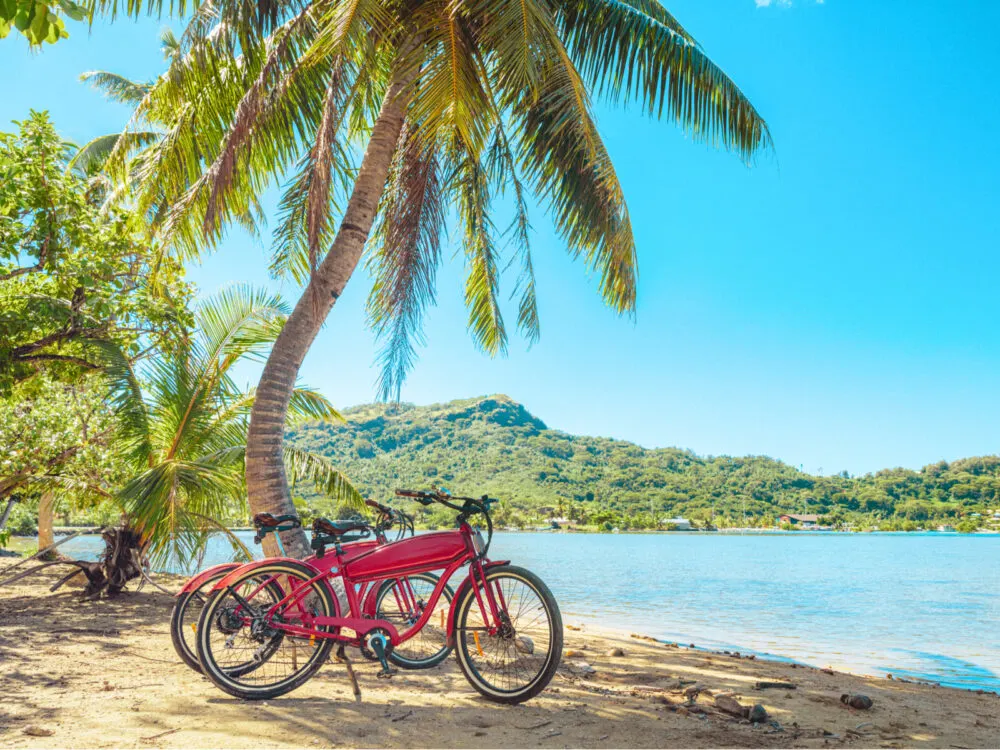
Maridav/Shutterstock
April to June is the least busy time to visit Tahiti. May and June see the fewest visitors overall, making them top choices if you want a laid-back vacation without dealing with throngs of tourists at the beach, in Papeete, or when booking your hotel and flight.
This 3-month period is unique because it includes the tail-end of the rainy season and the start of the dry season. That means planning your travel dates carefully is important to avoid the hottest and most humid weather:
- April: 76-87°F; 8-9 rainy days
- May: 75-86°F; 7-8 rainy days
- June: 73-85°F; 5 rainy days
June sees lower daily highs, less rainfall, and lower humidity for a more comfortable vacation and opportunities to enjoy outdoor activities in peace. April and May don’t see a ton of rain, but they’re still quite humid and a little warmer than June.
The late rainy season and early dry season is the perfect time to visit the Arahoho Blowhole, where sea caves and holes in the rocks bordering the ocean force water up into an impressive geyser-like spray not far from Papeete on the northern coast.
A short hike through a village a few minutes from the blowhole leads you to the Fa’aruma’i Waterfalls. The three falls are in the Fa’aruma’i Valley and they’ll be flowing at max capacity from April to June with the increased rainfall this season.
Venture out to the enchanted Grotte de Mara’a — these are three natural caves carved into the rock and teeming with water-loving ferns and moss in the rainforest, right on the coast.
Visit the Harrison Smith Botanical Garden on the western coast for sweet-smelling flowers (like the Tiare Tahiti, or Tahitian gardenia) thriving in warm, moist conditions. Walking paths lead through foliage to ponds teeming with lily pads and palm and bamboo groves where tortoises meander along.
In the Valley of Tefa’aiti, Arahurahu Marae makes an interesting visit this time of year. It’s an ancient Polynesian temple that has been restored to its former glory and transformed in to a museum of sorts with wooden sculptures, an altar, and ancient plaza.
As far as pricing goes, April-June isn’t the most expensive or cheapest time to visit Tahiti. Looking at data from Google Hotels and Skyscanner, we found that June is the cheapest month to visit among the least busy period:
- April: $362/night; flights from $667
- May: $535/night; flights from $599
- June: $328/night; flights from $629
You could pay as little as $3,163 for a 7-night trip to Tahiti with round trip airfare (if you’re diligent about finding a great deal on your flight). April isn’t much more expensive, but May can cost over $1,000 more because of the higher hotel prices that month.
While it’s harder to avoid crowds when you attend popular festivals, it can still be a great way to get to know Tahiti and its people. Here are some events that take place between April and May (June events are listed under Overall Best Time to Visit above):
- Rurutu Craft Exhibition (late Apr-May) is held at the Assembly Hall in Papeete with a different theme each year, like the traditional art of mill braiding, with handicrafts displaying the theme for sale
- Pareo Day (late May) is a cultural celebration that keeps the Polynesian ways alive with locals wearing their pareo, or colored cloth like a sarong decorated with painted or embroidered flowers, on the last Friday in May
These in-between months aren’t the best or worst for a visit, so it’s hard to go wrong if you plan on coming between April and June. You’ll be able to do some exploring, take some adventures in the rainforest (better in less-humid June), and lounge or swim at the beach.
Worst Time to Visit Tahiti
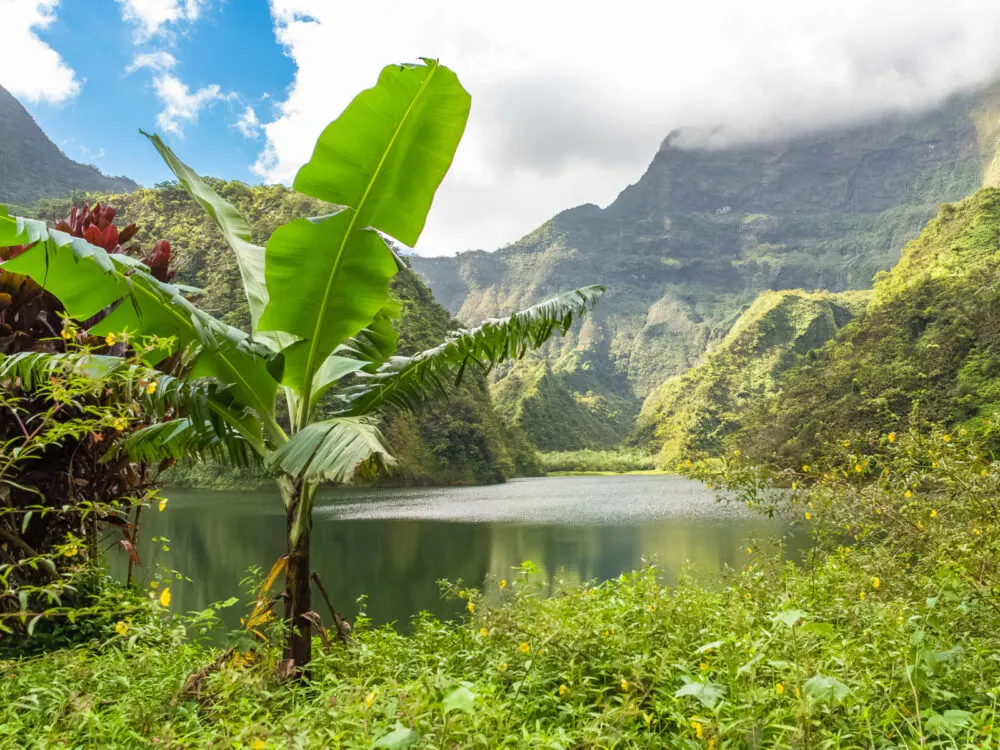
Pascale Gueret/Shutterstock
The worst time to visit Tahiti is during December and March. December is the rainiest, most humid month in Tahiti, while March is the hottest and one of the most expensive months of the year to visit.
Both December and March pose potential problems for your trip to Tahiti. You’ll encounter 14-15 rainy days (or more) in hot, humid December, which can derail even the best-planned vacation and ruin outdoor plans.
Daily highs reach their peak in March and humid conditions with up to 9 rainy days mean it’s not much better than December in terms of outdoor activities.
- December: 76-86°F; 14-15 rainy days
- March: 77-88°F; 9 rainy days
While December’s cooler temperatures can make it tempting for a visit, you won’t be able to avoid rain during your trip. On the plus side, showers may be short and pass over the island quickly — but it can still ruin a nice afternoon at the beach or exploring the rainforest.
These can be good months to pick an adventure that will push you out of your comfort zone — paragliding in Puna’auia, skydiving, parasailing, scuba diving — and enjoy an adrenaline rush while learning a new skill.
Rent ATVs for a ride through rugged trails in the rainforest if you can deal with the humidity. You’ll get a close-up look at the tropical flora and wildlife while you tear down trails that lead you to places that feel secret and totally unspoiled.
If you’re looking for a slower pace, hiking is excellent on Tahiti — especially in Papenoo Valley. But elsewhere on the island, trails are very rugged for the most part, so you’ll want to go with a guide.
Waterfall hikes are nice this time of year with chances to cool off in Fautaua Valley, Tiarei, and Vaipo. Shaded rainforest trails can be a lifesaver in the heat, and many of the falls have natural pools to take a refreshing dip.
You’ll run into moderate prices if you visit between December and March. December is cheaper, but March is the 3rd most-expensive month to visit Tahiti with high flight prices. Here’s what we found in data from Google Hotels and Skyscanner:
- December: $260/night; flights from $697
- March: $365/night; flights from $743
The island is famous for festive Christmas events in Papeete, like markets, lights, and art shows. Some years, the Chinese New Year falls during March and is a really cool event to attend in Tahiti (there’s a big Chinese community here).
You can also check out the Tahiti Fishing Contest in March to watch sport anglers bring in prize-worthy sport fish. But overall, you’re better off waiting until February (the cheapest month to visit) or June (one of the best and cheapest months) to visit Tahiti.
Tahiti by Month: What to Expect
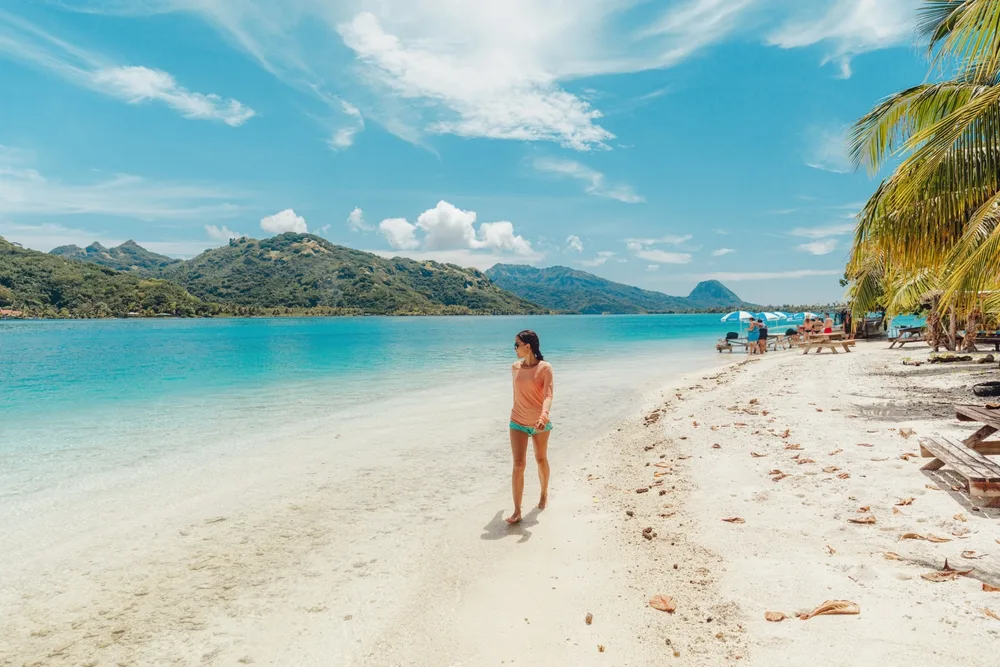
Maridav/Shutterstock
Pinpointing the right travel dates for your trip to Tahiti is easier when you have all the weather, cost, crowd, and event information at your fingertips. Here’s what you can expect month-to-month in Tahiti.
January
Part of the rainy season, January is hot (highs around 87°F) and humid with 13-14 rainy days. It’s one of the most humid months of the year, but you’ll find cheap hotels around $174/night. Airfare is expensive, starting at $743 round trip. Enjoy swimming at Taharuu Beach with black sand or visit the Museum of Tahiti and Her Islands.
February
Affordable February is wet and humid (highs around 87°F and 11 rainy days). Stay in or near the water! Visit the black sand beach and lighthouse at Pointe Venus or go snorkeling. Attend the International Oceanian Documentary Film Festival or Chinese New Year celebrations. With hotels around $189/night and flights from $629, you can find great deals this month.
March
A “Goldilocks” month that’s in-between, March sees about 9 rainy days with hot temperatures up to 88°F. The Tahiti Fishing Contest takes place this month, and it’s a good time to venture to the Grotte de Mara’a caves to get out of the heat and see some tropical flora. Flights are high, upwards of $743, but hotels average about $365/night.
April
The rainy season winds down in less-crowded April with 8-9 rainy days and highs around 87°F, but it’s still not quite the best time to visit. Go on a sailing trip, take a surfing lesson, or visit the Robert WAN Pearl Museum in Papeete. The Rurutu Craft Exhibition is at the end of the month. You’ll pay about $362/night for hotels and $667+ for airfare.
May
May is also low on visitors as the official start of the dry season. With 7-8 rainy days and highs around 86°F, it’s comfortable to do some hiking in the Fautaua Valley or take an ATV tour in the rainforest this month. You’ll see locals donning pareos in late May for Pareo Day and pay about $535/night for a hotel (flights start at $599 this month).
June
One of the best and least busy months to visit, June is awesome in Tahiti with highs around 85°F, 5 days of rain, and less humidity. Hike Mount Aorai, check out Tahiti Fashion Week or Miss Tahiti competitions, and visit Papenoo, Papara, or Teahupo beaches to try or watch surfing. Hotels cost around $328/night with flights from $629 this month.
July
July is the coolest month of the year with highs around 84°F and roughly 4 rainy days. It’s one of the best months to visit with the big Heiva I Tahiti festival taking place in Paea at the Arahurahu Marae temple. Hotels cost around $335/night with flights starting at $625. It’s a great month for sightseeing in Papeete’s cathedrals and Presidential Palace.
August
Balmy August sees highs near 83°F and 3-4 rainy days as one of the best months to visit Tahiti. This is the prime time to enjoy hiking to the 3 Fa’aruma’i Waterfalls and rainforest trails in lush Papenoo Valley. The Papeete Market is a great spot early in the mornings! You’ll pay around $311/night for hotels and upwards of $697 for round trip flights.
September
With nice, cooler temperatures maxing out around 82°F, September is dry with 3-4 rainy days and lower humidity. It’s a great month for snorkeling and diving, kayaking, and sailing. Hotels cost around $519/night and flights are $626 and up — a pricey month to visit, but still one of the best.
October
Busy October means rising temperatures with highs near 84°F and 7-8 rainy days. Humidity increases, waves calm down, and the Mister Tahiti Competition happens at the Papeete Town Hall. With nice conditions for sunset boat cruises and visiting the Water Gardens of Vaipahi, hotels are cheap around $313/night with flights starting at $629.
November
As one of the cheapest months in Tahiti, November’s average hotel prices are around $257/night with airfare starting at $625. The Hura Tapairu Dance Competition takes place in Papeete with highs warming to 86°F. It’s humid and there are 10+ rainy days, but you’ll save a lot on your trip this month.
December
December is another cheap month to visit Tahiti with hotels around $260/night and flights from $697. It’s hot, humid, and wet with highs around 86°F and 14-15 rainy days (the most of the year). Christmas events, markets, and art fairs along with Tahiti Tiare Day happen this month, but there are better times to visit with cooler temperatures and less rain/humidity.
Frequently Asked Questions
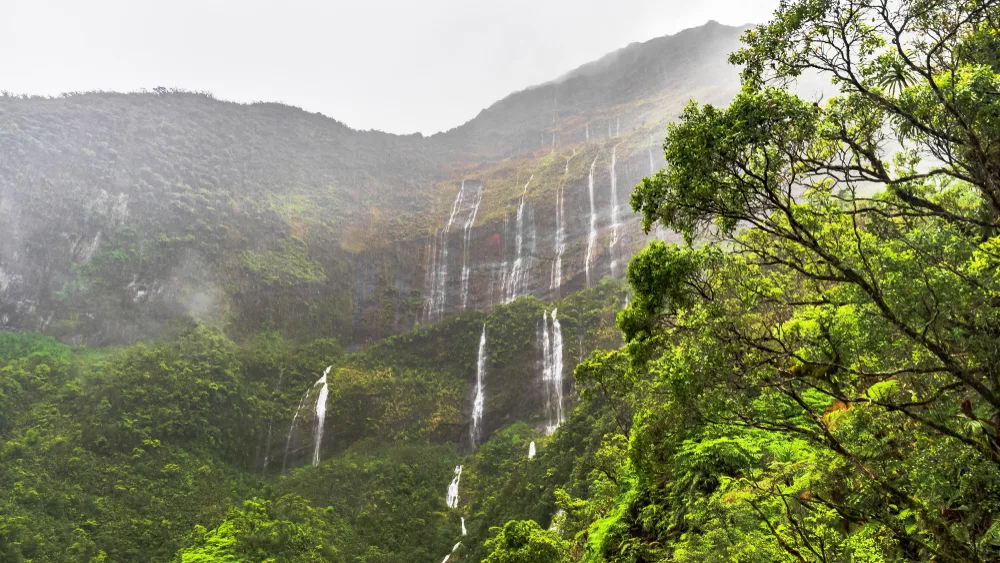
Tibor Scholz/Shutterstock
Travelers wondering about the right time to visit Tahiti also had a few related questions. You might find the answers you’re looking for by reading through them below!
What is the rainy season in Tahiti?
The rainy season in Tahiti runs from October to April/May. The wettest weather occurs between December and January with 13-15 rainy days each month. The bookend months -- October, November, March, and April -- see more manageable rainfall that can still leave opportunities for outdoor activities.
What is the best month to travel to Tahiti?
June is the best month to travel to Tahiti overall. It’s one of the best and least busy months to visit with moderate highs around 85°F and about 5 rainy days. Prices aren’t at their peak this month and it’s the perfect time to enjoy beaches, cultural festivals, and lower humidity.
What is the hurricane season for Tahiti?
November to March marks the full hurricane season for Tahiti, but the months from December to April tend to be the most active in terms of tropical storms, but Tahiti’s sheltered location in the central Pacific insulates it from most typhoon or cyclone storm threats.
Is Tahiti better than Bora Bora?
Tahiti and Bora Bora are both French Polynesian islands in the central Pacific Ocean, but Tahiti is more developed with a wider variety of resort, restaurant, and shop options. Bora Bora is more upscale and secluded. Tahiti offers black sand beaches with a few white sand shores, while Bora Bora is known for its white sand beaches.
How many days is enough in Tahiti?
Since the island is so remote with long flight times, you’ll want to spend at least a week in Tahiti. Usually, 7-10 days is enough in Tahiti to enjoy different beaches along its coasts, explore the rainforest with hikes and ATV rides, go snorkeling or diving, and visit the capital Papeete’s market, shops, and eateries.
So, When’s the Best Time to Visit Tahiti?
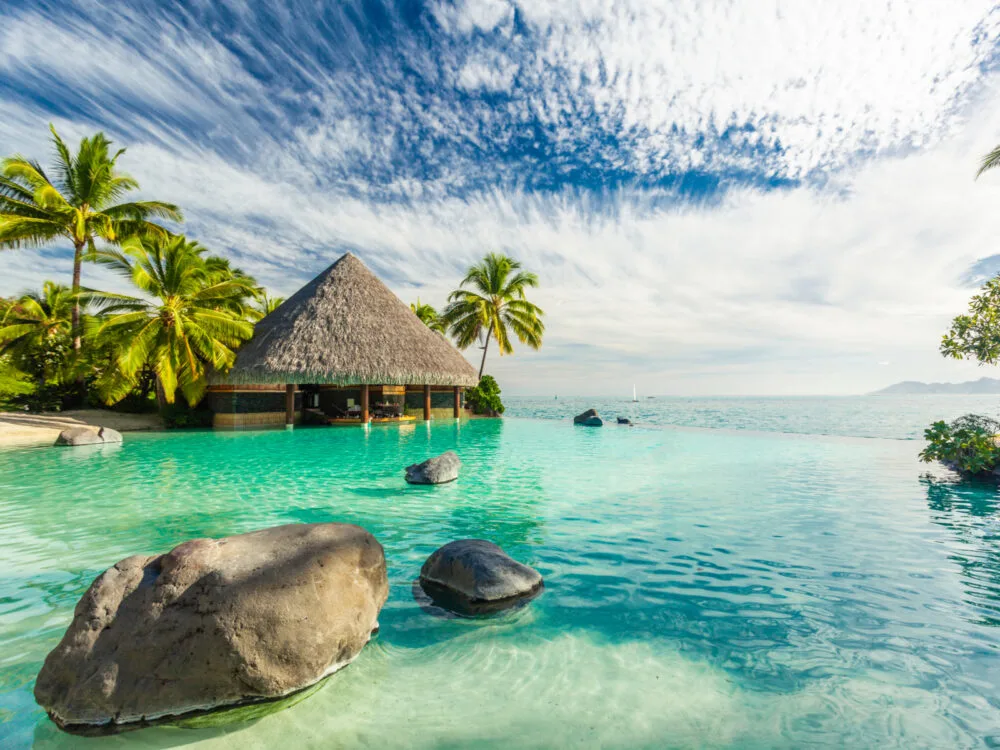
Martin Valigursky/Shutterstock
| 👍 Best Time to Visit | June-September |
| 💲 Cheapest Time to Visit | November-February |
| 🗓️ Least Busy Time to Visit | April-June |
| 👎 Worst Time to Visit | December & March |
The best time to visit Tahiti is between June and September — the best part of the dry season with milder temperatures, lower humidity, and moderate prices on the luxe resorts and hotels on the island.
Opt to visit between November and February for the cheapest prices on flights and hotels — as little as $174/night on average with flights starting at $625 round trip.
April, May, or June are better if you’re looking to avoid peak season crowds and offer fair weather conditions (especially in drier June). Avoid December and March to steer clear of the most rain, humidity, and heat.
It’s true that Tahiti can be a paradise year-round, but you can’t beat June to September for a memorable trip with great weather.
Whether you’re planning on lounging with cocktails in hand or exploring and taking tropical adventures, you’ll be able to choose the perfect travel dates to suit your goals for the trip!






